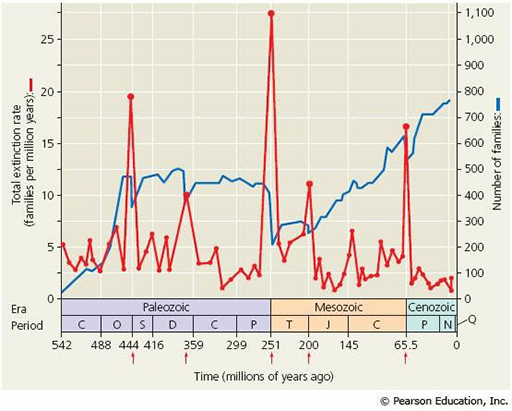7 Contemporary global biodiversity challenges
The natural world is not static and unchanging. In the past, there have been changes resulting from long-term processes such as continental drift and short-term events like volcanic eruptions or meteorite strikes. Some changes have caused extinctions, not just of individual species but of whole groups of organisms.

Cambrian, Ordovician, Silurian, Devonian, Carboniferous, Permian, Triassic, Cretaceous, Paleogene, Neogene and Quaternary Periods.
As you know from Activity 5, there have been five major extinction events in the past. These are marked on the time scale in Figure 19 by red arrows. The blue line shows the number of families of marine organisms and the decline in numbers at each extinction event. The red line shows the rate of extinction in families of marine organisms, with a peak value at the end of the Permian Period (P). In this particular mass extinction, 96% of species disappeared and all of the current species are descended from the surviving 4%.
Activity 8 Mass extinctions
Consider the consequences of mass extinction. From the graph shown in Figure 19, how long did it take for the marine organisms to recover their diversity (measured by the number of families) after the Permian mass extinction 248 million years ago?
Answer
It took around 100 million years for the number of marine families to reach the pre-mass extinction levels. This happened at the start of the Cretaceous Period (C) in the Mesozoic Era.
The question that arises from a consideration of the past is, what does the future hold? Are we now in the period of a sixth mass extinction?
